NASAs Lucy Spacecraft Has Left Earth On A 12 Year Long Asteroid Exploring Mission
This is the moment NASA's Lucy spacecraft takes off on a 12-year-long journey to explore asteroids described as 'fossils' of our solar system's formation.
Lucy was launched on a United Launch Alliance (ULA) Atlas V rocket from Space Launch Complex 41 at Cape Canaveral Space Force Station in Florida on Saturday, 16th October.
NASA released a statement regarding the launch and Lucy's mission on the day of the launch.
Bill Nelson, a NASA Administrator, said in a statement released by NASA: "Lucy embodies NASA’s enduring quest to push out into the cosmos for the sake of exploration and science, to better understand the universe and our place within it."
He added: "I can’t wait to see what mysteries the mission uncovers."
Over the next 12 years, Lucy will fly by one main-belt asteroid and seven Trojan asteroids, making it NASA's first single spacecraft mission in history to explore so many different asteroids.
Thomas Zurbuchen, associate administrator for the Science Mission Directorate at the agency’s Headquarters in Washington said: "Today’s launch marks a genuine full-circle moment for me as Lucy was the first mission I approved in 2017, just a few months after joining NASA."
He added: "A true mission of discovery, Lucy is rich with opportunity to learn more about these mysterious Trojan asteroids and better understand the formation and evolution of the early solar system."
A couple of hours after the launch Lucy detached from the second stage of the ULA Atlas V 401 rocket.
The two massive 24 feet (7.3 meters) wide solar arrays unfurled approximately 30 minutes later and began charging the spacecraft's batteries.
Lucy is now travelling at around 67,000 mph (108,000 kph) on a trajectory that will orbit the Sun and bring it back toward Earth in October 2022 for a gravity assist.
Named after the fossilized skeleton of one of our earliest known hominin ancestors the Lucy mission aims to explore two swarms of Trojan asteroids that share an orbit around the sun with Jupiter.
NASA hopes that studying them will reveal information about the formation of our solar system.
Hal Levison, Lucy principal investigator at Southwest Research Institute (SwRI), said: "We started working on the Lucy mission concept early in 2014, so this launch has been long in the making.
“It will still be several years before we get to the first Trojan asteroid, but these objects are worth the wait and all the effort because of their immense scientific value. They are like diamonds in the sky."
The spacecraft will undergo its first Earth gravity sits in 2022 which will direct Lucy’s trajectory beyond the orbit of Mars.
Lucy will then swing back towards Earth for a second gravity assist in 2024 which will propel the spacecraft toward the Donaldjohanson asteroid in 2025.
Lucy will then head for its first Trojan asteroid encounter in the swarm ahead of Jupiter. After completing its first four targeted flybys it will head back to Earth for its third gravity boost in 2031 which will catapult it towards the trialling swarm of trojans by 2033.
Donya Douglas-Bradshaw, Lucy project manager at NASA’s Goddard Space Flight Center, said: "Today we celebrate this incredible milestone and look forward to the new discoveries that Lucy will uncover."
NASA's Kennedy Space Center/NF/Peter Barker
-
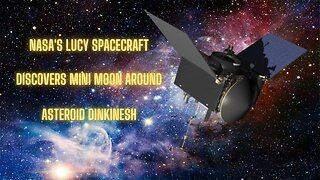 5:37
5:37
Granson
4 months agoNASA's Lucy Spacecraft Discovers Mini Moon Around Asteroid Dinkinesh
8.17K -
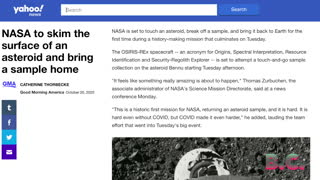 1:09
1:09
B.C. Begley
3 years agoNASA mission will touch down on asteroid Bennu today
162 -
 0:40
0:40
NASA ARCHIVES
1 year agoLaunching Lucy, NASAs First Mission to the Trojan Asteroids- Oct 8, 2021
25 -
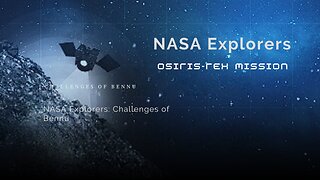 22:17
22:17
jtpamaz
5 months agoNASA Osiris Rex Mission
69 -
 0:55
0:55
NASA Space Administration
8 months agoExploring the Cosmos: NASA's Epic Asteroid Adventures
118 -
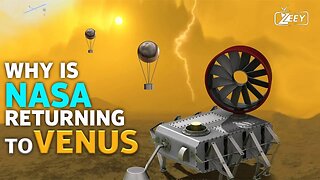 10:10
10:10
ZEEY1
8 months ago $0.01 earnedWhy is NASA going back to Earth's evil twin, Venus? | Nasa missions | Venus & earth | discoveries
32 -
 5:08
5:08
Planetzer0
9 months agoJourney to the Moon: NASA's Exclusive Guided Expedition
23 -
 8:09
8:09
Future Space
1 year agoVoyager Spacecraft's Terrifying NEW Discovery In Space Changes Everything!
2091 -
 48:49
48:49
TakeOnTheWorldPodcast
2 months agoNASA's Historic Moon Mission: Odysseus Rover's Journey to the Lunar South Pole 🌕
42 -
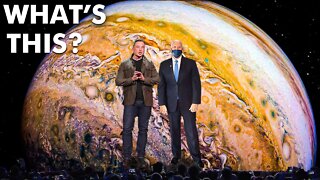 9:42
9:42
Future Space
1 year agoElon Musk & NASA's Terrifying NEW Discovery On Jupiter Changes Everything!
356